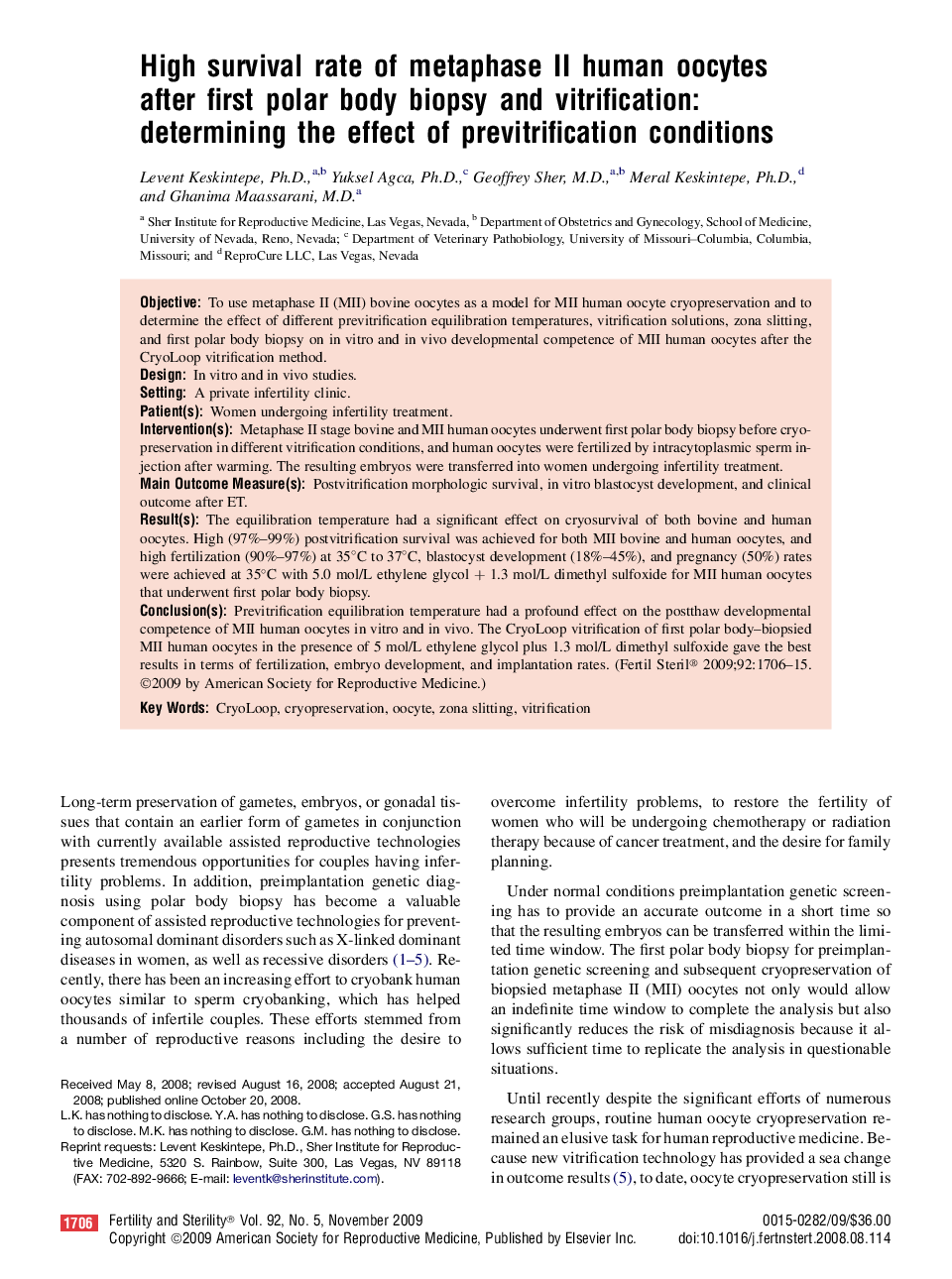| Article ID | Journal | Published Year | Pages | File Type |
|---|---|---|---|---|
| 3941079 | Fertility and Sterility | 2009 | 10 Pages |
ObjectiveTo use metaphase II (MII) bovine oocytes as a model for MII human oocyte cryopreservation and to determine the effect of different previtrification equilibration temperatures, vitrification solutions, zona slitting, and first polar body biopsy on in vitro and in vivo developmental competence of MII human oocytes after the CryoLoop vitrification method.DesignIn vitro and in vivo studies.SettingA private infertility clinic.Patient(s)Women undergoing infertility treatment.Intervention(s)Metaphase II stage bovine and MII human oocytes underwent first polar body biopsy before cryopreservation in different vitrification conditions, and human oocytes were fertilized by intracytoplasmic sperm injection after warming. The resulting embryos were transferred into women undergoing infertility treatment.Main Outcome Measure(s)Postvitrification morphologic survival, in vitro blastocyst development, and clinical outcome after ET.Result(s)The equilibration temperature had a significant effect on cryosurvival of both bovine and human oocytes. High (97%–99%) postvitrification survival was achieved for both MII bovine and human oocytes, and high fertilization (90%–97%) at 35°C to 37°C, blastocyst development (18%–45%), and pregnancy (50%) rates were achieved at 35°C with 5.0 mol/L ethylene glycol + 1.3 mol/L dimethyl sulfoxide for MII human oocytes that underwent first polar body biopsy.Conclusion(s)Previtrification equilibration temperature had a profound effect on the postthaw developmental competence of MII human oocytes in vitro and in vivo. The CryoLoop vitrification of first polar body–biopsied MII human oocytes in the presence of 5 mol/L ethylene glycol plus 1.3 mol/L dimethyl sulfoxide gave the best results in terms of fertilization, embryo development, and implantation rates.
